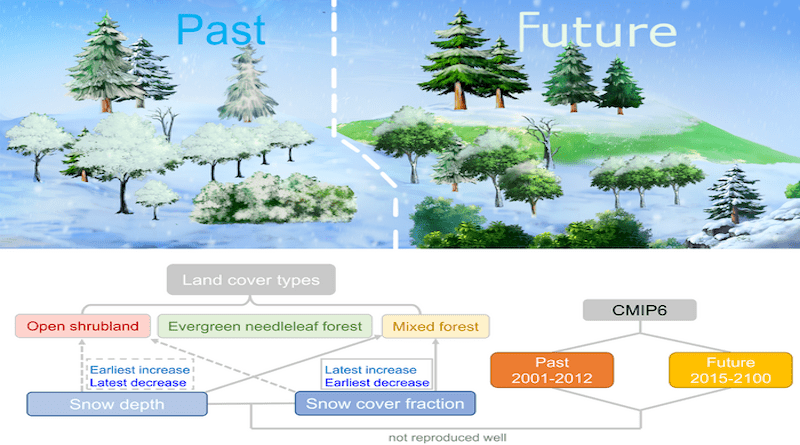Changes In Approximation Of Snow By Climate Models Over Typical Vegetation In Northern Hemisphere
Seasonal snow is sensitive to climate change, and is always taken as a signal of local climate changes. Against the background of global warming, the annual snow cover in the Northern Hemisphere is following an overall decreasing trend.
Since snow plays an important role in the water cycle and has significant effects on atmospheric circulation, it is important to be able to simulate it well in climate models. However, as a process that operates on a small scale, snow needs to be approximated (or “parameterized”), and so many studies have attempted to improve the schemes that perform this parametrization of snow in climate models.
In the mid-to-high latitudes of the Northern Hemisphere, the impacts of snow cover dynamics on vegetation show large differences among boreal biomes. Researchers from Lanzhou University, China, selected open shrubland, mixed forest, and evergreen needle leaf forest in the mid-to-high latitudes (45°–70°N), which are highly sensitive to snow changes. Then, over a selected area of North America, Europe, Central Asia, and East Asia, they addressed the unique relationships between snow cover and snow depth for typical vegetation cover types and explored the reproduction of snow accumulation processes by model parameterization. The results have recently been published in Atmospheric and Oceanic Science Letters.
According to the findings of this study, there are different relationships between snow cover and snow depth for these three typical land cover types, and the relationships not only represent the characteristic changes in the processes of snow accumulation and snow melt, but can also be used in the model for predicting snow accumulation.
“However, partly because the influence of different land cover types is not fully considered, it was found that state-of-the-art climate models are unable to reproduce the relationships between snow cover and snow depth in both historical and future simulations, which will affect our understanding of the ecological impacts of snowmelt in spring”, says Prof. Xiaodan Guan, the first and corresponding author of this paper.
Therefore, it is important to improve simulation results by considering the interaction between land cover types and snow processes in snow parameterization schemes.

